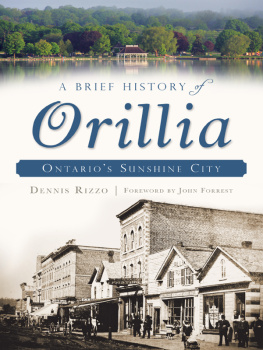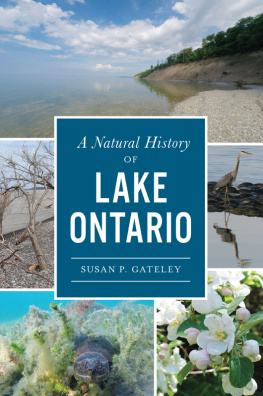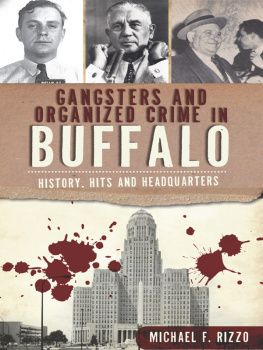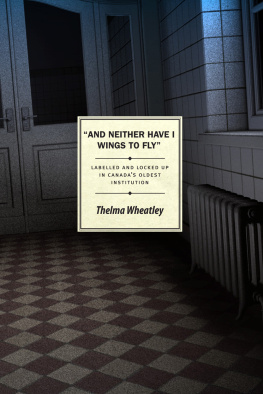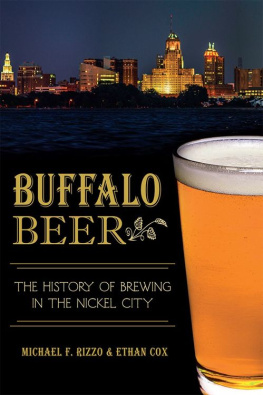
Published by The History Press
Charleston, SC 29403
www.historypress.net
Copyright 2014 by Dennis Rizzo
All rights reserved
Cover image: Gazebo photo by Carolyn Campbell.
First published 2014
e-book edition 2014
ISBN 978.1.62584.557.3
Library of Congress Cataloging-in-Publication Data
Rizzo, Dennis C.
A brief history of Orillia : Ontarios Sunshine City / Dennis Rizzo ; foreword by John Forrest.
pages cm.
Includes bibliographical references and index.
print edition ISBN 978-1-62619-104-4
1. Orillia (Ont.)--History. I. Title.
F1059.5.O7R59 2014
971.3--dc23
2014013115
Notice: The information in this book is true and complete to the best of our knowledge. It is offered without guarantee on the part of the author or The History Press. The author and The History Press disclaim all liability in connection with the use of this book.
All rights reserved. No part of this book may be reproduced or transmitted in any form whatsoever without prior written permission from the publisher except in the case of brief quotations embodied in critical articles and reviews.
CONTENTS
FOREWORD
To quote author Dennis Rizzo, Writing a history of a place I have lived in for just shy of three years was daunting.
Rizzo has met and exceeded that challenge. A Brief History of Orillia: Ontarios Sunshine City presents a remarkable, insightful and entertaining overview of Orillias development, from prehistory to present. Rizzos perspective as a newbie portrays, through unbiased eyes, Orillias unique historical status. He reveals Orillia as not just an individual community but rather as a microcosm of the growth and development of Canada. The sun that has risen for eons over the ancient Aboriginal fish weirs links to that same sun symbolized on the flags of the City of Orillia and the Rama First Nation.
He begins at the source of it all: the geographical location where the twin lakes of Simcoe and Couchiching meetwhere indigenous peoples gathered to harvest fish for thousands of years. His book takes readers on a journey through time, from pre-European contact across Champlains Huronia, through the eras of fur traders, immigrant farmers and industrial entrepreneurs to the present day. Orillia remains a city constantly searching its history to define its future. A Brief History of Orillia will engage and enlighten, whether you have ancestors who fished one thousand years ago at the Narrows, traveled with Champlain, struggled to prove their landholding, crewed steamships on the Trent, assembled a Tudhope automobile or performed at the opera house or if you are reading the name Orillia for the first time.
Rizzos perspective as a recent arrival gives him a fresh direction with which to educate and entertain his readers, dispel some myths, explain the unusual and confirm some long-held beliefs. A Brief History of Orillia does so through the eyes and actions of those who created and still live in the cultural mosaic that is the Sunshine City. This chronicle validates and accurately reflects the words of Thomas Carlyle: The present is the living sum-total of the past.
History is said to be written by the victors, but Rizzos rendition depicts Orillias history with an even hand, as it was created and lived by the participants and as the home and daily venue for famous and infamous people, activities and events. Over the years, the city has been held up as both a positive and a negative role model, often at the same time by different groups. It has seen it all but yearns for more.
Indeed, symbols on the City of Orillias official crest depict much of its heritage, but it professes just a one-word motto: Progress. From ancient times to modern day, this progress is faithfully recounted by this work, based on recorded fact, accepted opinion and intriguing mythology and all flavored with a Leacockian perspective.
You will enjoy the journey.
John Forrest
ACKNOWLEDGEMENTS
Writing a history of a place I have lived in for just shy of three years was daunting. Without support and help, it would have been impossible to complete even this modest offering.
I owe special gratitude to my wife, Elizabeth van Houtte, for her endurance of my obsession with writing this book, as well as for bringing me to Orillia in the first place. My twins, Ariana and Zoe, and my son, Michael, were the incentive to tell the story the right way. Ross Greenwood became my sounding board and writing mentor in hours of discussion over gallons of coffee at Apple Annies. John Forrest offered sage advice and encouragement. Whitney Landis and Ryan Finn of The History Press were patient and resourceful.
John Craig and Andrew F. Hunter spent lifetimes gathering anecdotes and recollections that would have been otherwise lost. The Simcoe County Historical Society captured early life in its Pioneer Papers series. Mark Douglas and William Allen carry the memories of an entire people through oral tradition. Randy Richmond did a fine job of pulling local flavour from news stories. The Orillia Heritage Society is continuing the effort to record our lives for posterity. Hundreds of others have posted information on genealogical Internet sites and in small, family-centred publications. Without these resources, presenting this story would have been impossible.
Sheena Wescott-Sykes at the Orillia Museum of Art and History provided access to so much that I cannot even enumerate it all. Jennifer Murrant at the Orillia Public Library archives had patience and knowledge to share and provided some critical scans. Mark Douglas listened to a white guy try to discuss native history and did not laugh; he helped, and I owe him several pouches of tobacco. Marcel Rousseau shared his deep knowledge of things Orillian and was a great factor in my level of comfort in completing this work. Jack Marshall and Charlie Harvie listened and explained. I only wish there had been time to bring all of the stories together in this limited space.
There will be another opportunity.
INTRODUCTION
In our every deliberation, we must consider the impact of our decisions on the next seven generations.
Iroquois maxim
The history of Orillia as it is today cannot be easily separated from the history and development of surrounding towns such as Oro-Medonte, Atherley, Coldwater, Severn and Ramara. At a greater distance, the features of Lake Simcoe near Barrie played a crucial role in why Orillia developed as it did and in the timeline that it did. But Orillia and Atherley share a unique geographical element that, more than anything, was the reason for the evolution of the site into a village, town and city. Long before there was European settlement, there was Mnjikaningthe place where the fish gathered and were trapped in the weirs. Without this simple geographic feature and the sociocultural forces that embrace it, Orillia most likely would not exist.
A town tends to define itself on the basis of its heroes and the events that occur in and around it. Yet most mainstream histories ignore and pass over deserving individuals. Orillia is no different. We laud Champlain with a monument and remain ignorant of the contributions of Antoine Gaudaur, William Yellowhead, Jacob Gill and others. We look to Stephen Leacock as one of us, despite his late arrival, but argue the value of the fifty-year-old Mariposa Folk Festival. We praise the men of our history, but somehow Mercy Manwaring, Mary Shilling, Margaret Barker and others are offered only as footnotes.
There are others who have been linked with and by Orillia over the years. Many did not continue to live here after their careers advanced or moved here after they retired. Under the heading of Favourite Sonsand Daughters, it is important to note that there have been many Orillians throughout the history of this town who contributed, sought no fanfare and lived quiet, fulfilling lives. Their stories require telling, probably more so than that of the famous almost Orillians.
Next page
